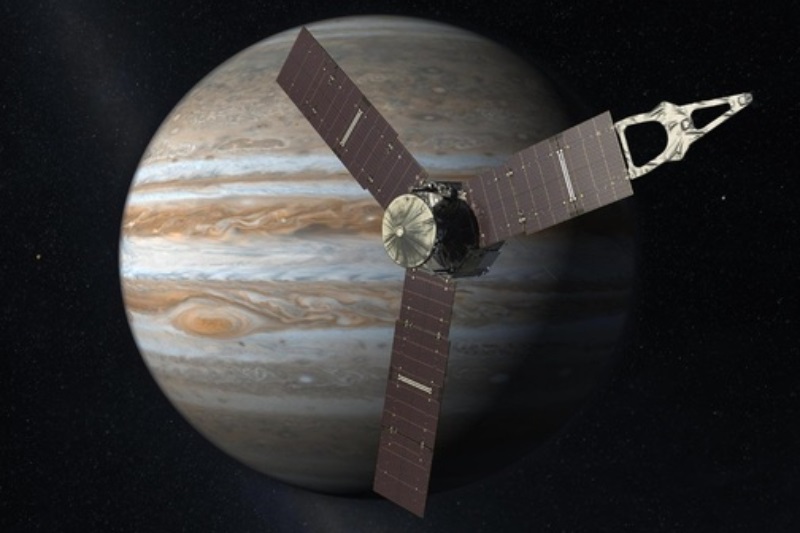The US space agency said, NASA’s solar-powered Juno spacecraft will soon reach the halfway point in data collection of Jupiter when it makes its 16th science pass of the gas giant.
Juno spacecraft will be 5,053 kilometres above Jupiter’s cloud tops and hurtling by at speed of 207,287 kilometres per hour, on December 21.
NASA said that this will mark the spacecraft’s halfway point in data collection during its prime mission.
Apparently, Juno is in a highly-elliptical 53-day orbit around Jupiter. Juno’s each orbit includes a close passage over the planet’s cloud deck, where it flies a ground track that extends from Jupiter’s north pole to its south pole.
Jack Connerney, Juno deputy principal investigator from the Space Research Corporation in in the US, said, “With our 16th science flyby, we will have complete global coverage of Jupiter, albeit at coarse resolution, with polar passes separated by 22.5 degrees of longitude.”
He said, “This will provide coverage of the planet every 11.25 degrees of longitude, providing a more detailed picture of what makes the whole of Jupiter tick.”
On August 5 2011 Juno was launched in space. The spacecraft entered orbit around Jupiter on July 4, 2016. Whereas, its science collection began in earnest on the August 27, 2016, flyby.
Meanwhile, during these flybys, Juno’s suite of sensitive science instruments probes beneath the planet’s obscuring cloud cover and studies Jupiter’s auroras to learn more about the planet’s origins, interior structure, atmosphere and magnetosphere.
Also read: Google’s Sundar Pichai explains US Congress why searching ‘idiot’ results in Donald Trump pictures

